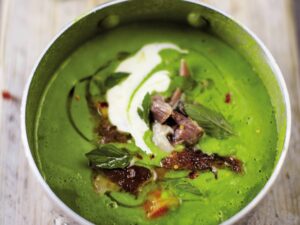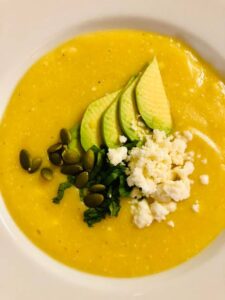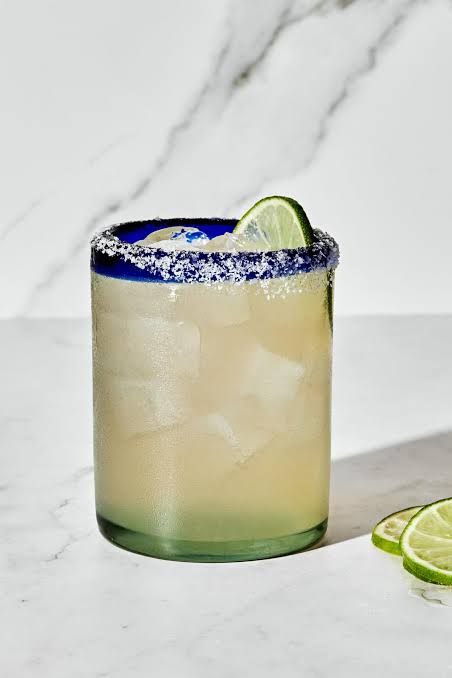About Spas Soup:-
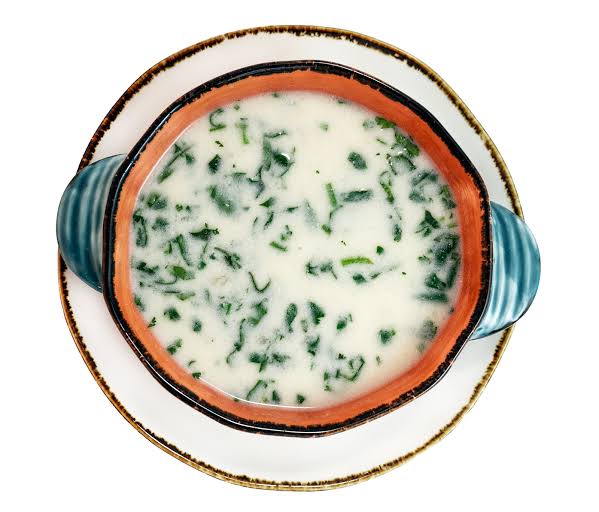
Spas, also known as Armenian yogurt soup, is a traditional dish deeply rooted in Armenian culinary heritage. This comforting soup is a staple in Armenian households, especially in the colder months, but it’s also enjoyed as a refreshing dish during the warmer seasons. The soup is known for its tangy, creamy flavor and nourishing qualities. It’s typically made with matzoon (a type of Armenian yogurt), wheat or rice, fresh herbs, and sometimes a bit of egg for added richness.
In this guide, we’ll explore the history and cultural significance of Spas, dive into the key ingredients that make this dish unique, and provide a detailed recipe complete with step-by-step instructions. Whether you’re new to Armenian cuisine or a seasoned cook looking to perfect your Spas recipe, this guide will offer everything you need to know.
Cultural Context of Spas Soup
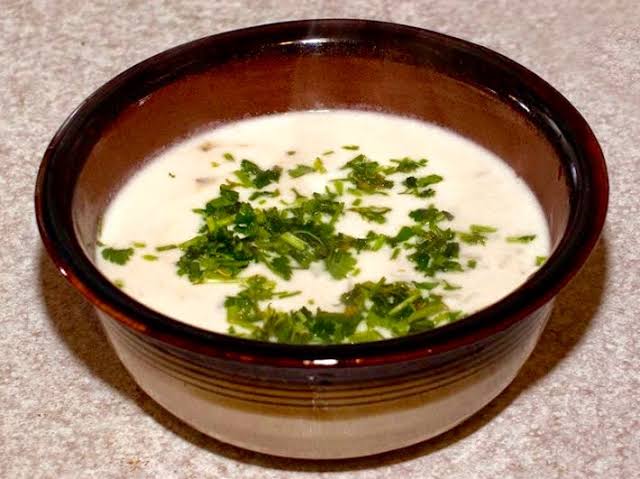
Historical Background
Spas soup has been a part of Armenian cuisine for centuries. It’s a dish that symbolizes the simplicity and richness of Armenian culinary traditions. Yogurt, one of the main ingredients, has been a staple in the Armenian diet for thousands of years, thanks to the region’s pastoral lifestyle and the abundance of dairy products.
The soup is often associated with rural Armenian life, where it was traditionally made by farmers who had easy access to fresh dairy products and grains. It’s a dish that reflects the resourcefulness of Armenian cooks, who created hearty, nutritious meals from the ingredients readily available to them.
Cultural Significance
Spas is more than just a dish; it’s a symbol of Armenian hospitality and tradition. It’s often served at family gatherings, holidays, and special occasions. The soup is also known for its health benefits, particularly its ability to soothe the stomach and provide warmth in the cold winter months.
In Armenian culture, sharing a bowl of Spas is a way of showing love and care for one’s family and guests. It’s a dish that brings people together, embodying the Armenian spirit of community and togetherness.
Read this also:-Afgani shorba Egg Roll Recipe
Key Ingredients of Spas Soup
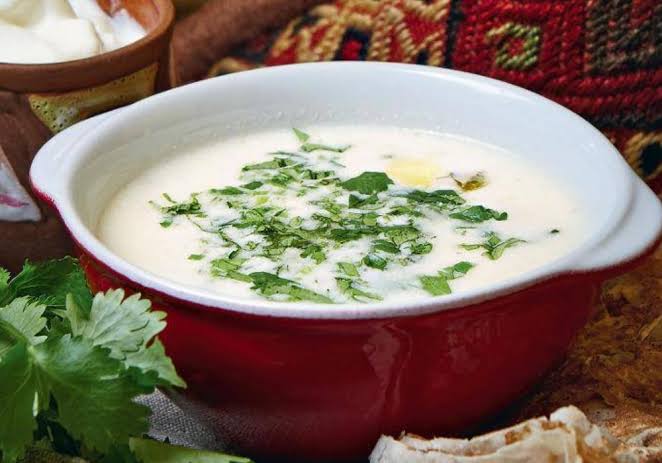
1. Yogurt (Matzoon)
The primary ingredient in Spas is matzoon, a type of Armenian yogurt. Matzoon is similar to Greek yogurt but has a slightly different fermentation process that gives it a unique tangy flavor. It’s rich, creamy, and provides the base for the soup’s signature taste.
If matzoon is not available, you can use regular plain yogurt, preferably full-fat, or Greek yogurt as a substitute. The yogurt is often mixed with water to achieve the desired consistency for the soup.
2. Wheat or Rice
Traditionally, Spas is made with Dzavar (a type of cracked wheat), which gives the soup a slightly chewy texture and adds to its heartiness. In some variations, rice is used instead of wheat, providing a different texture and flavor profile.
Both wheat and rice absorb the flavors of the yogurt and herbs, making them essential for creating the soup’s comforting, filling quality.
3. Egg
Some versions of Spas include an egg, which is whisked into the yogurt mixture to add extra richness and creaminess to the soup. The egg also helps to thicken the soup slightly, giving it a more velvety texture.
4. Fresh Herbs
Herbs play a crucial role in Spas, adding freshness and depth of flavor. Commonly used herbs include fresh cilantro, dill, mint, and parsley. These herbs not only enhance the taste of the soup but also provide a beautiful color contrast to the creamy white base.
5. Butter or Oil
A small amount of butter or oil is often used to sauté the herbs before adding them to the soup. This step enhances the flavor of the herbs and gives the soup a richer taste.
6. Water or Broth
Water is typically used to thin out the yogurt and create the soup’s base. However, for a richer flavor, some cooks use vegetable or chicken broth instead. The choice of liquid can significantly affect the final taste of the soup, making it either light and refreshing or rich and hearty.
7. Salt and Pepper
Simple seasoning with salt and pepper is essential to bring out the flavors of the yogurt and herbs. The amount of seasoning can be adjusted to taste, depending on the saltiness of the yogurt and the preferences of the cook.
Step-by-Step Spas Soup Recipe

Ingredients
Here’s a detailed list of ingredients with measurements in grams to make a batch of Spas soup that serves 4 to 6 people.
- Yogurt (Matzoon or Greek Yogurt): 800g
- Water or Broth: 500ml (use vegetable or chicken broth for a richer flavor)
- Dzavar (Cracked Wheat) or Rice: 100g
- Egg: 1 large (optional)
- Butter or Oil: 30g
- Fresh Cilantro: 20g (finely chopped)
- Fresh Dill: 15g (finely chopped)
- Fresh Mint: 10g (finely chopped)
- Fresh Parsley: 15g (finely chopped)
- Salt: 5g (adjust to taste)
- Black Pepper: 2g (freshly ground, adjust to taste)
Instructions
1. Preparing the Grains
- Washing: Begin by thoroughly washing the dzavar (cracked wheat) or rice under cold water. This step removes any impurities and excess starch, which could make the soup too thick.
- Cooking: In a medium saucepan, bring 500ml of water to a boil. Add a pinch of salt, then stir in the dzavar or rice. Lower the heat to a simmer and cook until the grains are tender but still slightly chewy—about 20 minutes for cracked wheat and 15 minutes for rice. Once cooked, drain any excess water and set the grains aside.
2. Preparing the Yogurt Base
- Whisking the Yogurt: In a large mixing bowl, whisk the yogurt until smooth. If using Greek yogurt, you may need to thin it out with a little water to achieve the desired consistency. The yogurt should be creamy but not too thick, resembling the consistency of heavy cream.
- Adding the Egg (Optional): If you’re using an egg, crack it into the yogurt mixture and whisk until fully incorporated. The egg will enrich the soup, giving it a silkier texture.
- Adding Liquid: Gradually add 500ml of water or broth to the yogurt, whisking continuously to prevent lumps. If you prefer a thicker soup, you can reduce the amount of liquid. The key is to achieve a balance where the soup is creamy but still light.
3. Cooking the Soup
- Combining the Ingredients: Pour the yogurt mixture into a large pot. Place the pot over medium heat, stirring constantly to prevent the yogurt from curdling. This step is crucial, as high heat can cause the yogurt to separate. Continue stirring until the soup is heated through but not boiling.
- Incorporating the Grains: Once the yogurt mixture is hot, stir in the cooked dzavar or rice. Continue to cook the soup over low heat, stirring occasionally, for about 10 minutes. The grains will absorb some of the liquid, thickening the soup slightly.
4. Sautéing the Herbs
- Melting the Butter or Heating the Oil: In a small skillet, melt the butter or heat the oil over medium heat. Once hot, add the fresh herbs (cilantro, dill, mint, and parsley) and sauté for 1-2 minutes until they become fragrant and slightly wilted. This step enhances the flavor of the herbs and infuses the butter or oil with their aroma.
- Adding Herbs to the Soup: Stir the sautéed herbs into the soup, mixing well to distribute them evenly. The herbs will add a fresh, vibrant flavor to the creamy soup base.
5. Final Seasoning and Serving
- Seasoning: Taste the soup and adjust the seasoning with salt and freshly ground black pepper. The seasoning should balance the tanginess of the yogurt, the richness of the butter or oil, and the freshness of the herbs.
- Serving: Spas soup is best served hot, immediately after cooking. Ladle the soup into bowls and garnish with a sprinkle of fresh herbs or a drizzle of extra virgin olive oil for added richness.
Tips for Making the Perfect Spas Soup
- Prevent Curdling: The most important tip for making Spas soup is to prevent the yogurt from curdling. Always cook the soup over low to medium heat and stir continuously. If you notice the yogurt starting to separate, lower the heat immediately.
- Adjusting Consistency: The thickness of Spas soup can vary based on personal preference. If you prefer a thinner soup, add more water or broth. For a thicker, heartier soup, reduce the liquid or increase the amount of grains.
- Customizing Flavors: While cilantro, dill, mint, and parsley are traditional herbs used in Spas, feel free to experiment with other fresh herbs like basil or tarragon. The herbs should be added towards the end of cooking to preserve their flavor.
- Serving Temperature: Spas can be served hot or cold, depending on the season. In summer, chilled Spas is a refreshing alternative, while hot Spas is perfect for warming up in winter.
- Pairing Suggestions: Serve Spas soup with a side of warm flatbread or crusty bread. A simple side salad with fresh tomatoes, cucumbers, and a light vinaigrette complements the soup’s creamy texture.
Common Variations of Spas Soup:-
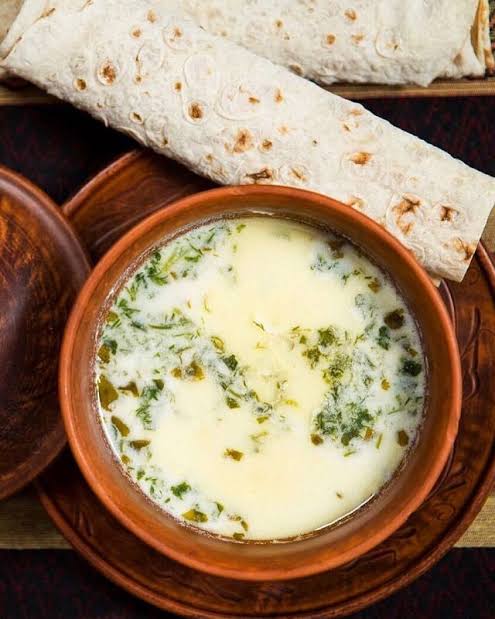
1. Spas with Chickpeas
Adding cooked chickpeas to Spas is a common variation that increases the soup’s protein content and adds a bit of texture. Simply stir in a cup of cooked chickpeas during the final cooking stage.
2. Spas with Spinach
Some versions of Spas include fresh spinach, which is added during the last few minutes of cooking. The spinach wilts into the soup, adding a slightly earthy flavor and a boost of nutrients.
3. Vegan Spas
To make a vegan version of Spas, substitute the yogurt with a plant-based yogurt (like almond or soy yogurt) and use vegetable broth. Skip the egg and use olive oil instead of butter.
4. Spas with Barley
Barley can be used in place of dzavar or rice for a chewier texture and nuttier flavor. Cook the barley separately until tender, then add it to the soup in the same way you would add the grains.
Nutritional Benefits of Spas Soup
Spas soup is not only delicious but also packed with nutritional benefits. Here’s a breakdown of the key nutrients found in a typical serving of Spas.
1. Protein
Yogurt is a good source of protein, providing essential amino acids that support muscle growth and repair. If you add chickpeas or use egg in your Spas, you’ll further boost the protein content.
2. Calcium
Yogurt is rich in calcium, which is crucial for maintaining strong bones and teeth. A single serving of Spas can contribute significantly to your daily calcium intake.
3. Probiotics
The yogurt in Spas contains probiotics, which are beneficial bacteria that support gut health. Probiotics help maintain a healthy digestive system and can improve overall immune function.
4. Vitamins and Minerals
The herbs in Spas, such as cilantro and parsley, are packed with vitamins A and C, as well as antioxidants. These nutrients help protect the body against oxidative stress and support overall health.
5. Fiber
If you use grains like dzavar, rice, or barley in your Spas, you’ll benefit from the fiber content. Fiber aids in digestion, helps regulate blood sugar levels, and can contribute to heart health.
6. Low in Fat
Spas soup can be relatively low in fat, especially if made with low-fat yogurt and minimal butter or oil. It’s a light yet satisfying dish that fits well into a balanced diet.
7. Hydration
Given its high water content, Spas is a hydrating soup that helps replenish fluids, especially when served cold in the summer.
Serving Suggestions and Pairings
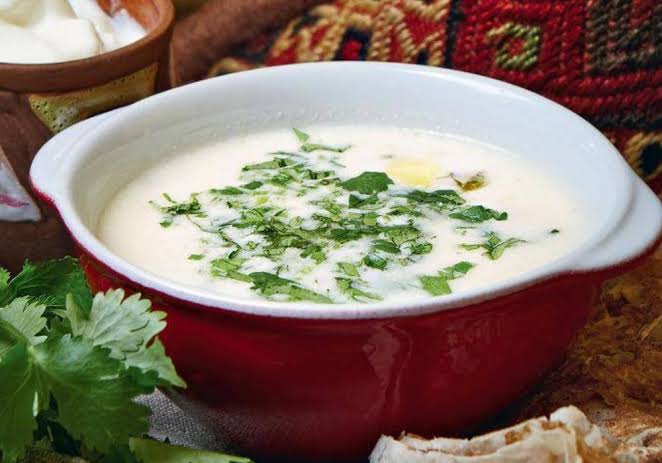
Spas soup is versatile and can be paired with a variety of dishes to create a complete meal. Here are some serving suggestions:
1. Bread
- Lavash: This traditional Armenian flatbread pairs perfectly with Spas. Use it to scoop up the soup or enjoy it on the side.
- Crusty Bread: A slice of warm, crusty bread is a great companion to the creamy soup.
2. Salads
- Cucumber and Tomato Salad: A simple salad of cucumbers, tomatoes, and fresh herbs with a light vinaigrette is a refreshing side dish that complements the richness of Spas.
- Armenian Pickled Vegetables: Serve Spas with a side of torshi (Armenian pickled vegetables) for a tangy contrast to the soup’s creamy texture.
3. Main Courses
- Grilled Meats: Spas can be served as a starter or side dish alongside grilled meats like lamb, chicken, or beef.
- Dolma: Armenian dolma, stuffed grape leaves with a savory filling, makes an excellent pairing with Spas.
4. Beverages
- Herbal Tea: A light herbal tea, such as mint or chamomile, pairs well with the flavors of Spas.
- White Wine: If you prefer wine, a crisp white wine like Sauvignon Blanc complements the tanginess of the yogurt soup.
Conclusion
Spas soup is a beloved dish in Armenian cuisine, cherished for its comforting flavors, nourishing ingredients, and cultural significance. Whether you’re making it for a family dinner, a special occasion, or just as a comforting meal on a cold day, Spas is sure to satisfy.
By following this comprehensive guide, you’ll be able to prepare Spas soup with confidence, enjoying the process of cooking a dish that has been passed down through generations. The beauty of Spas lies in its simplicity and versatility, making it a dish that can be easily adapted to suit your taste preferences and dietary needs.
So gather your ingredients, take your time in the kitchen, and savor the rich, creamy goodness of Spas soup. Whether served hot or cold, this traditional Armenian soup is a testament to the enduring appeal of simple, wholesome cooking.
What is Spas soup?
Spas is a traditional Armenian yogurt soup made with yogurt (matzoon), wheat or rice, and various fresh herbs. It’s known for its creamy texture and tangy flavor, and is often enjoyed hot or cold.
What are the main ingredients in Spas soup?
The key ingredients are yogurt (matzoon or Greek yogurt), wheat (cracked wheat or dzavar) or rice, fresh herbs (such as cilantro, dill, mint, and parsley), butter or oil, water or broth, and sometimes an egg.
Can Spas soup be made vegetarian or vegan?
es, Spas can be made vegetarian by omitting the egg and using vegetable broth instead of chicken broth. To make it vegan, use plant-based yogurt and skip the egg and butter, replacing them with olive oil.
-
chicken thigh| chicken thigh recipes | tasty and delicious
About Chicken thigh :- Chicken thighs refer to the upper part of a chicken’s leg, located between the drumstick and the body. They are known for being dark meat, which means they have a higher fat content than chicken breasts, making them juicier and more flavorful. key characteristics:- 1. Dark Meat 2. Higher Fat Content
-
Old fashioned| mocktail| old fashioned mocktail recipe
About Old fashioned:- The Old Fashioned is a classic cocktail that dates back to the early 19th century and is known for its simplicity and strong flavor profile. It’s typically made with whiskey, sugar, bitters, and a citrus peel, often served over a large ice cube in a lowball glass. Why we love old fashioned
-
Margarita recipe | how to make | margarita mocktail | amazing cocktail
About margarita:- A margarita is a popular cocktail that originated in Mexico, known for its refreshing and tangy flavor profile. It is typically made with tequila, lime juice, and an orange liqueur like Cointreau or Triple Sec, and is often served in a glass with a salted rim. Margaritas can be enjoyed on the rocks
-
Mac and cheese recipe | baked mac and cheese recipe| best mac and cheese recipe|
About mac and cheese :- Mac and Cheese, short for macaroni and cheese, is a classic comfort food beloved by many across the world. This dish typically consists of cooked elbow macaroni pasta combined with a creamy cheese sauce. While simple in its basic form, mac and cheese has endless variations, from stovetop versions to
-
Ground beef| ground beef recipes | how to make | tasty and juicy
About ground beef:- Ground beef is beef that has been finely chopped or minced, making it versatile and suitable for various recipes. It’s commonly used in dishes like burgers, meatballs, tacos, and spaghetti sauce. Here’s a detailed look at ground beef: why we love ground beef:- Ground beef is a popular ingredient for several reasons,
